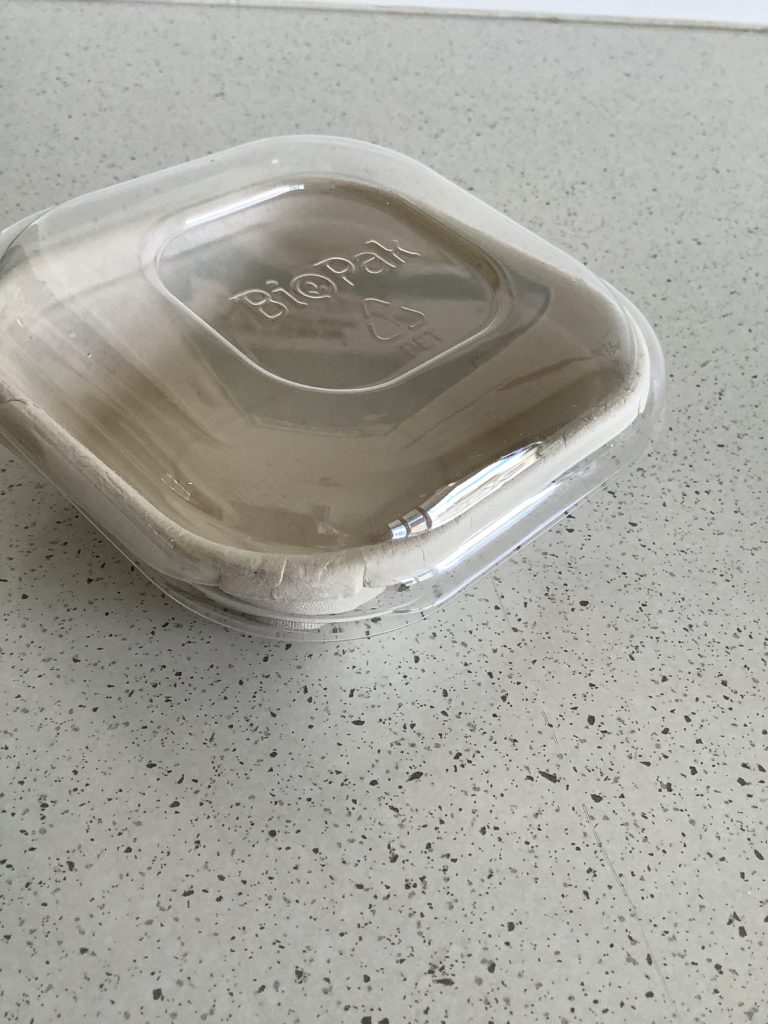How to tell if packaging can be composted
News and Events / News
If you’re unsure what packaging can be composted, then these are the two trusted symbols to look for:


Items with either of these symbols mean they have been tested and certified against the Australian Standard as 100% compostable.
NOTE! This does NOT mean they are recyclable, so please DO NOT place compostable packaging in your kerbside recycling bin, even if it looks like cardboard or plastic.
Industrial compost and FOGO
An item with an industrial compost symbol means it is certified for composting in an industrial hot compost facility. If your council provides a FOGO bin service (food organics, garden organics), the contents of your FOGO bin goes to one of these industrial, hot compost facilities where the contents break down over 12 – 16 weeks and become compost.
WHAT COMPOSTABLE PACKS CAN YOU PUT IN YOUR FOGO BIN IN SOUTHERN TASMANIA?
Both bags and rigid packages or items with a compost symbol can go in FOGO in the South (Hobart and Glenorchy).
As examples, this includes this dog waste bag

or this cup lid:

or this cutlery:

or these food trays:

WHAT COMPOSTABLE PACKS CAN YOU PUT IN YOUR FOGO BIN IN NORTHERN TASMANIA?
Only rigid packages and items with a compost symbol can go in FOGO in the North (Launceston, Tamar Valley and Central Coast).
As examples, this would include the cup lid, cutlery, and food trays shown above.
NO compostable bags including dog waste bags and kitchen caddy bags are permitted in Northern Tasmania’s FOGO service. This decision was made to make it safer for staff who manually remove contamination from FOGO after it arrives at the North TAS compost facility. It also avoids the difficulties in correctly identifying compostable versus regular plastic bags in the FOGO piles, and removes the need to open bags to check that the contents are compostable.
What else should I know?
You can put items with the industrial compost symbol in a cold, home compost but be prepared for it to take a very long time to break down… 12 months or more depending on the item.

Sometimes an item might not have the symbol but just say ‘compostable’ such as on this lid:

Or it may say ‘PLA’ (polylactic acid) or ‘CPLA’ (crystalised polylactic acid) which are bioplastics made from natural starches such as sugarcane or corn.
Any of these rigid plastic-substitutes that are made from 100% plant-materials are suitable for industrial hot composting and FOGO, not home composting.
Be aware!
It can be harder to know what packaging can be composted because packs can have a compostable base and a non-compostable lid. This is more common when hot food is served because bioplastics such as PLA and CPLA degrade when in contact with heat.
Check the fine print to see if non-compostable, PET plastic has been used instead. PET plastic (with the Plastic Identification Code 1 inside the triangle) can be recycled in your kerbside bin. Put the compostable base in the FOGO bin (or try home compost or the garbage if you don’t have FOGO).
Here’s an example of packaging with a base that can be composted and recyclable (PET plastic) lid that cannot:

Watch out for other claims including ‘degradable’, ‘made from 70% plant starch’ and ‘biodegradable’ etc. These can be misleading and may still contain non-compostable, synthetic materials.
If in doubt, put them in the garbage bin so you don’t risk adding microplastics into Tassie’s environment.
Home compost
If you don’t have a FOGO bin or access to a larger, hot compost system at home, then this is the symbol to look for:

It means the item is certified for composting in a home compost setup such as a tumbler, bay or bin.
These are most commonly smaller, cold compost systems. Find out more about how to compost at home in Tasmania in this handy guide.
Sometimes a pack will feature both symbols.
But if it only features the home compost symbol, it is still suitable for industrial hot composting (but remember, no bags of any kind in Northern TAS FOGO).

Compostable doesn’t mean recyclable
If something has a compostable symbol, it can NOT be recycled unless it specifically says so on the pack.
Items with the industrial compost symbol or the home compost symbol don’t belong in your recycling bin, because they can cause contamination. This includes the ones that look like cardboard because they’re not usually made of recyclable wood fibre but instead are made from other non-recyclable fibres such as sugarcane or bamboo. These food and drink packaging items are also more likely to have food scraps, liquid or oil stains which contaminate recycling.

Try to find a way to compost these items instead and if that’s not possible, put them in the garbage.
If you don’t have access to any compost facilities, contact your local council for options, set up a home compost system, see if your local community garden can help, or take part in sharewaste.com.
It can be tricky to know what packaging can be composted, and sometimes the symbols are small and hard to read, so if you’re unsure… ask your council or contact us!
We’re here to help Tasmanians be good sorts and to avoid, reduce and re-use waste in our beautiful state.
